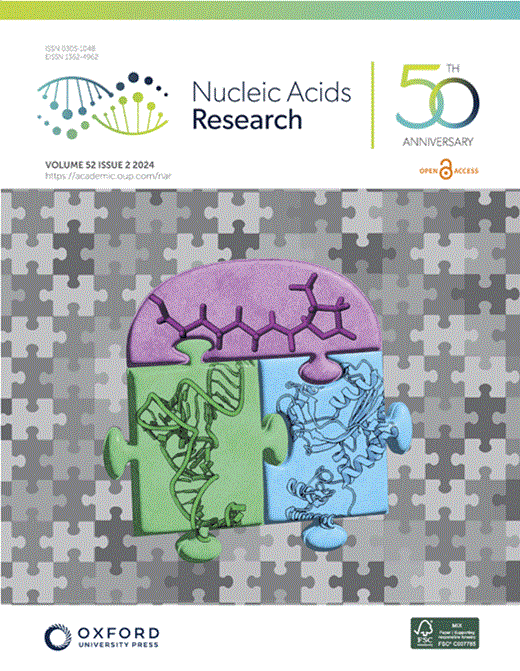A specific pluripotency-associated eRNA controls Nanog locus by shaping the epigenetic landscape and stabilizing enhancer-promoter interaction.
IF 16.6
2区 生物学
Q1 BIOCHEMISTRY & MOLECULAR BIOLOGY
引用次数: 0
Abstract
Despite a plethora of studies exploring the transcriptional regulation of the Nanog gene, the role of the enhancer RNAs (eRNAs) derived from Nanog-interacting super-enhancers (SEs) remains under-investigated. In the present study, we examined the functional role of the eRNAs transcribed from the -5 kb Nanog SE in mouse embryonic stem cells (mESCs) and found that an eRNA, here defined as -5KNAR, was essential to maintain the Nanog locus in an epigenetically active configuration, thereby ensuring pluripotency. We found that the here identified -5KNAR functionally interacts with the RAD21 protein, suggesting a role in stabilizing a cohesin complex at the Nanog locus, ensuring the generation and maintenance of an enhancer-promoter loop. Silencing of -5KNAR caused a cascade of events, including the generation of a DNA methylation wave (likely spreading from a single methylated CpG site), substantial chromatin remodeling, and loss of the enhancer-promoter loop, inducing Nanog silencing and mESC differentiation. Under these conditions, exogenous re-expression of Nanog was unable to restore either the endogenous Nanog expression or the enhancer-promoter interaction, suggesting that, at hierarchical level, the expression of the -5KNAR plays a prominent role in maintaining the pluripotency in mESCs.求助全文
约1分钟内获得全文
求助全文
来源期刊

Nucleic Acids Research
生物-生化与分子生物学
CiteScore
27.10
自引率
4.70%
发文量
1057
审稿时长
2 months
期刊介绍:
Nucleic Acids Research (NAR) is a scientific journal that publishes research on various aspects of nucleic acids and proteins involved in nucleic acid metabolism and interactions. It covers areas such as chemistry and synthetic biology, computational biology, gene regulation, chromatin and epigenetics, genome integrity, repair and replication, genomics, molecular biology, nucleic acid enzymes, RNA, and structural biology. The journal also includes a Survey and Summary section for brief reviews. Additionally, each year, the first issue is dedicated to biological databases, and an issue in July focuses on web-based software resources for the biological community. Nucleic Acids Research is indexed by several services including Abstracts on Hygiene and Communicable Diseases, Animal Breeding Abstracts, Agricultural Engineering Abstracts, Agbiotech News and Information, BIOSIS Previews, CAB Abstracts, and EMBASE.
 求助内容:
求助内容: 应助结果提醒方式:
应助结果提醒方式:


